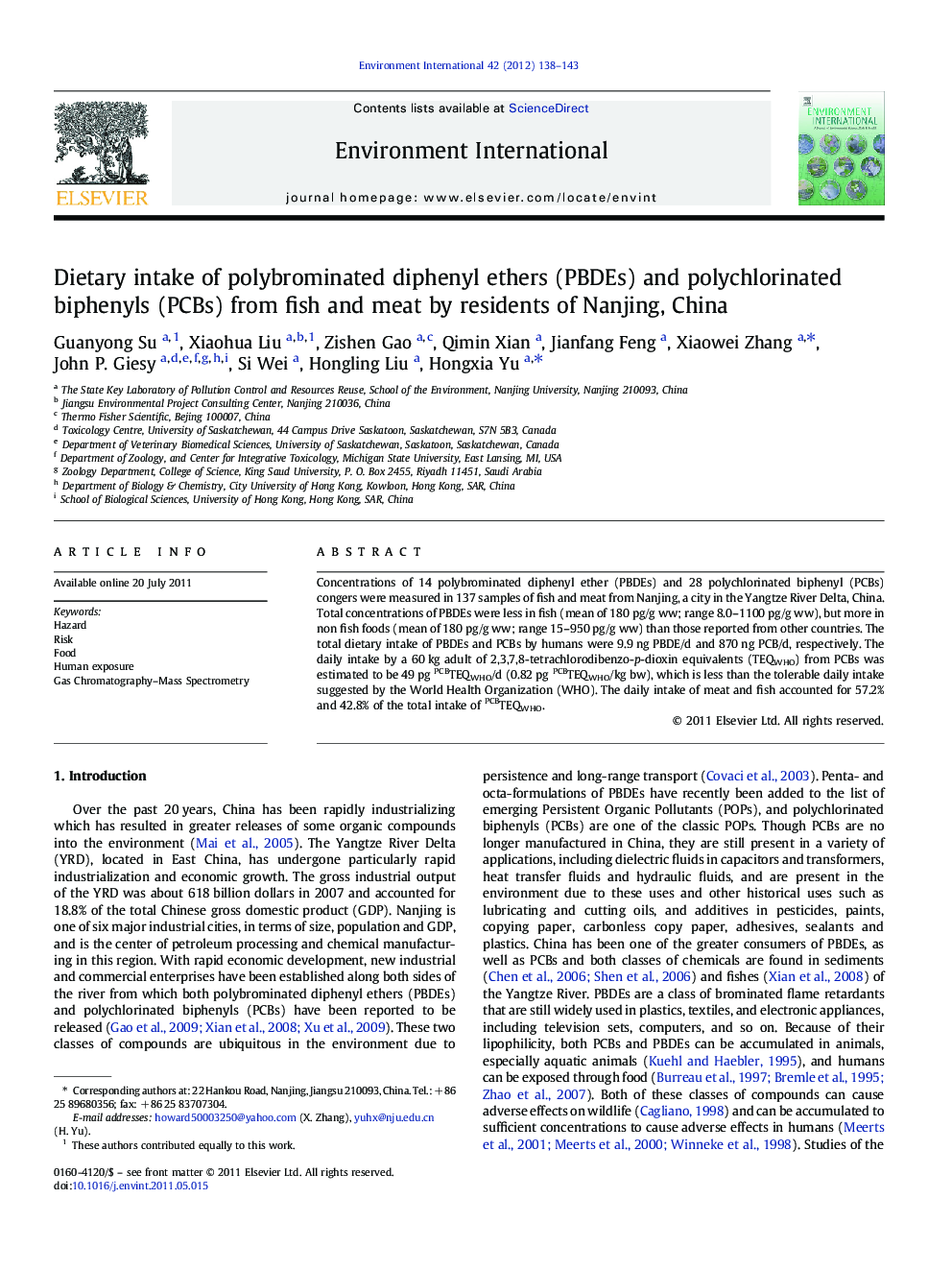| Article ID | Journal | Published Year | Pages | File Type |
|---|---|---|---|---|
| 4422977 | Environment International | 2012 | 6 Pages |
Concentrations of 14 polybrominated diphenyl ether (PBDEs) and 28 polychlorinated biphenyl (PCBs) congers were measured in 137 samples of fish and meat from Nanjing, a city in the Yangtze River Delta, China. Total concentrations of PBDEs were less in fish (mean of 180 pg/g ww; range 8.0–1100 pg/g ww), but more in non fish foods (mean of 180 pg/g ww; range 15–950 pg/g ww) than those reported from other countries. The total dietary intake of PBDEs and PCBs by humans were 9.9 ng PBDE/d and 870 ng PCB/d, respectively. The daily intake by a 60 kg adult of 2,3,7,8-tetrachlorodibenzo-p-dioxin equivalents (TEQWHO) from PCBs was estimated to be 49 pg PCBTEQWHO/d (0.82 pg PCBTEQWHO/kg bw), which is less than the tolerable daily intake suggested by the World Health Organization (WHO). The daily intake of meat and fish accounted for 57.2% and 42.8% of the total intake of PCBTEQWHO.
► We determined total concentrations of 14 PBDEs and 28 PCBs in 137 samples of fish and meat from Nanjing. ► The PBDEs’ concentrations were less than those reported from other countries in fishes, but were relatively higher than other countires in meat. ► Current exposures of common people to 28 PCBs in Nanjing was estimated to be 0.82 pg PCBTEQWHO /kg bw.
